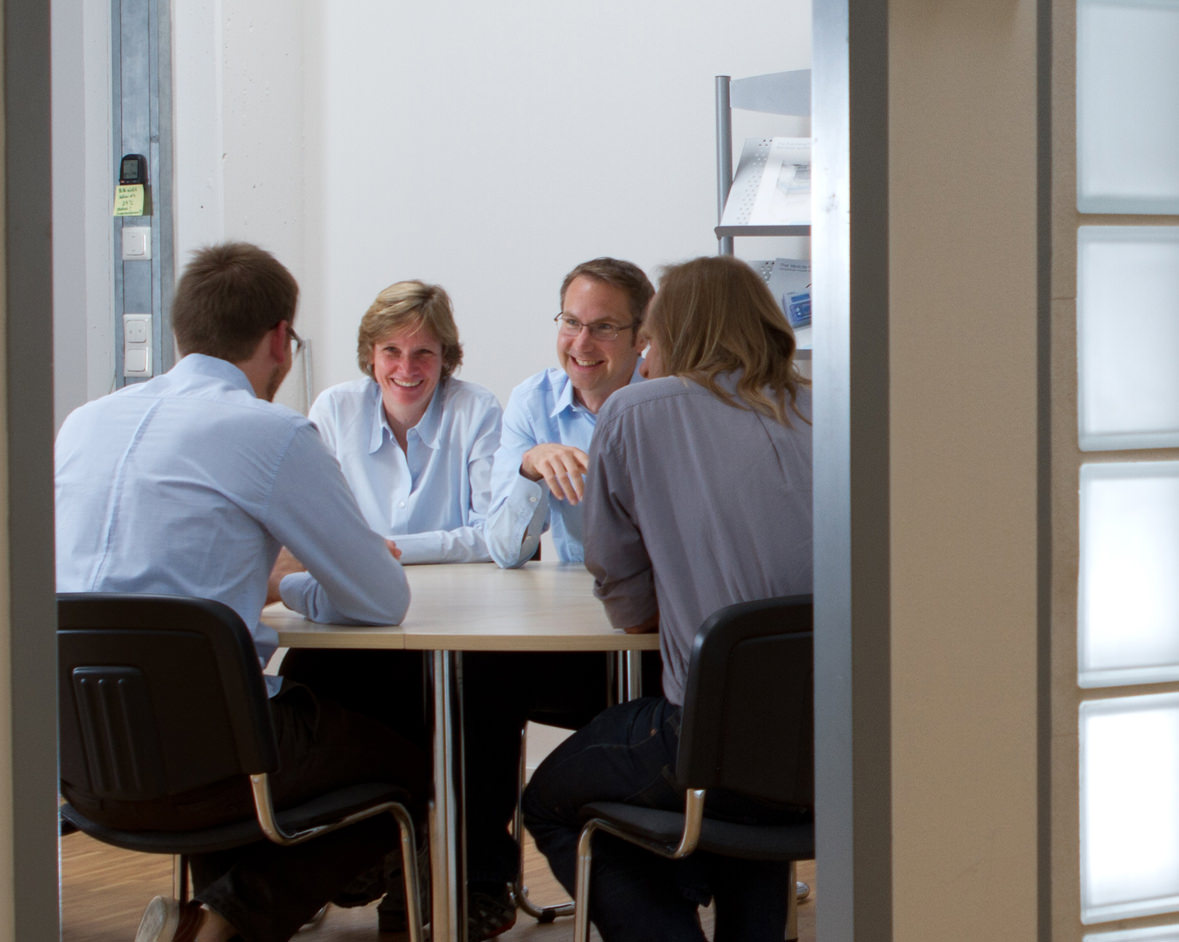For Andrea Brüggemann, CSO of Nanion Technologies GmbH, her affair with ion channels was love at first sight. Like many students at Germany’s Ruhr-Universität Bochum (RUB) wanting a balanced education in the natural sciences, she was forced to choose a concentration. “I chose physics, since I thought it was the center of science!” says Brüggemann. She rounded out her studies by supplementing her physics concentration with a side of biochemistry, and soon found herself sitting in Olaf Pongs’ lectures, which were fascinating— “so fascinating, that I did my undergraduate work—in German, Diplomathesis—in biophysics about Drosophila eag, one of the few potassium channels that was cloned at that time,” she says. “Since then, I am bound to ion channels!”
Brüggemann’s enthusiasm for the natural sciences started early, though a penchant for science wasn’t a family trait. “As a kid, I loved science and everything that was logic,” she says. Her father, a steel mill worker, and her stay-at-home mother of five encouraged their only daughter to pursue her passion, even if they didn’t completely understand physics’ appeal. “My parents always supported me and told me that education is the most valuable thing,” Brüggemann says.
I find it intriguing to look at physiology with the eyes and techniques of a physicist.
- Brüggemann
After completing her diplomathesis, Brüggemann joined Walter Stühmer’s group at the MPI in Göttingen as a PhD candidate. There, she learned a variety of electrophysiological techniques. Teresa Giraldez, Brüggemann’s longtime friend and colleague, remembers her as a visiting student in Francisco Barros’ lab at the University of Oviedo Medical School in Spain. “She was so enthusiastic, so interested about everything,” says Giraldez. Indeed, Brüggemann was in training for what would become her life’s work. “From here I got hooked on ion channels,” she says, “and they became the center of my scientific life regardless of whether I worked in a research institute, a big pharmaceutical, or a small start-up company.”
She ended up at the latter. As Nanion Technologies’ CSO, Brüggemann puts her knowledge and skills to work in new and exciting ways. “My main work concentrates on the improvement of automated electrophysiology machines,” she says. “I aim to broaden the possible applications but also increase throughput.” With innovative products such as the Port-a-Patch®, a travel-sized patch clamp setup, the now well-known start-up works with clients looking to address an array of scientific problems with the instruments they produce. “I see two major directions in biophysics,” she says. “One is in the field of single molecule detection. But I personally find approaches where biophysics gets into more complex physiological areas even more fascinating. This is an area we are starting to explore with collaborations on human differentiated iPS cells.” 
Through her company’s technology, Brüggemann addresses this and other areas, to the benefit of her clients. One such client is Christopher Fanger at Hydra Biosciences. “Andrea is a deeply knowledgeable, highly expert colleague,” Fanger says. “She is the kind of person who wants to really listen and understand a complex problem, getting every detail right, before she tries to suggest any solution.” Brüggemann worked with Fanger to find a good fit for Hydra in using Nanion technology, helping implement it and following up with technical support. She has also teamed up with Daniel Minor, professor at the University of California, San Francisco’s California Institute for Quantitative Biomedical Research, who called on Brüggemann and her colleague Mohamed Kreir for help with a project involving the characterization of pore-only sodium channels his lab produced using a protein dissection approach. “Mohamed and Andrea did key experiments regarding functional characterization of the pores and providing evidence that we could switch ion selectivity from sodium to calcium following the installation of key mutations in the selectivity filter,” Minor says. “Andrea has a kind and open style. This makes collaboration with her very easy, fun, and productive.” For her part, Brüggemann is eager to assist. “I am always happy to see that our little tools help in other people’s research,” Brüggemann says. “And it is even more fun to discuss and implement further improvements, to facilitate even more exceptional experiments.”
Brüggemann finds other collaborators at the Biophysical Society Annual Meeting. She initially attended in 1994, when she presented her first poster. “I got to know all the big names of so many of whose papers I had read,” she recalls. “I am still in contact with most of them. And it is a great fun to meet them year after year at the BPS meetings.” She views this experience as a crucial component of her development as a scientist. “There is no real difference between preparing for a career in research or industry,” says Brüggemann. “Try to broaden your skills without losing the focus of your PhD. Try to look at it from different perspectives and get in contact with other researchers in your field. The BPS meeting is a perfect platform for this, especially when you present a poster.”
 These days Brüggemann also presents products to potential clients and collaborators. Kambiz Shekdar, CSO of Chromocell Corporation, has worked with Brüggemann’s team on several projects related to cell line characterization and compound testing for ion channel drug discovery applications. “Andrea is one of the rare scientists in industry who is an excellent researcher and thinker and who has been able to develop a company, technologies, and products that are successful in the market, and all of this in the highly competitive ion channel industry segment,” Shekdar says. “In putting together our collaboration, Andrea was one of the rare gems who worked with us to come up with ways to move things forward where everyone’s interests were taken into account and met.”
These days Brüggemann also presents products to potential clients and collaborators. Kambiz Shekdar, CSO of Chromocell Corporation, has worked with Brüggemann’s team on several projects related to cell line characterization and compound testing for ion channel drug discovery applications. “Andrea is one of the rare scientists in industry who is an excellent researcher and thinker and who has been able to develop a company, technologies, and products that are successful in the market, and all of this in the highly competitive ion channel industry segment,” Shekdar says. “In putting together our collaboration, Andrea was one of the rare gems who worked with us to come up with ways to move things forward where everyone’s interests were taken into account and met.”
For Brüggemann, the future looks a lot like the present: enthusiastically finding creative solutions to scientific problems, using innovative tools. “She is an example of eagerness and whole-heartedness, and works hard to transform a new idea into reality: she has totally proved this after creating a company that is now an absolute leader in the field,” says Giraldez. “And she never stops, always looking for improvement and new technical approaches to answer new scientific questions.” Simply put, Brüggemann excels at her work, and works with passion. “I guess I just love what I am doing right now,” she says, “and I will continue doing it.”